Bonsai styles and soil preferences play a pivotal role in understanding the art of bonsai cultivation. A harmonious relationship between the two not only defines the aesthetic appeal but also the health and longevity of the tree.
This article sheds light on the profound importance of plant nutrition in bonsai care, emphasizing the intricate dance between the bonsai’s stylistic form and its soil’s nurturing capabilities.
By tapping into this synergy, enthusiasts and experts alike can elevate their bonsai cultivation, ensuring their miniature trees thrive in beauty and health.
Understanding Bonsai Soil Needs
Bonsai soil, distinct in its composition and characteristics, is tailored to meet the specific needs of these miniature trees. It offers a blend of attributes that foster the health, growth, and aesthetics of various bonsai styles.
One of the unique features of bonsai soil is its ability to provide impeccable drainage while retaining just the right amount of moisture. This balance ensures that the bonsai tree roots remain healthy, avoiding the pitfalls of both waterlogging and drought.
So, why not just use regular garden soil? While garden soil might be rich and fertile, it tends to compact over time, especially in the confined environment of a bonsai container. Such compaction can inhibit root growth and affect the tree’s ability to absorb essential nutrients.
Moreover, garden soil may retain too much water, leading to root rot, a common ailment that can be fatal to bonsai trees.
The Role Of Fertilizers In Bonsai Care
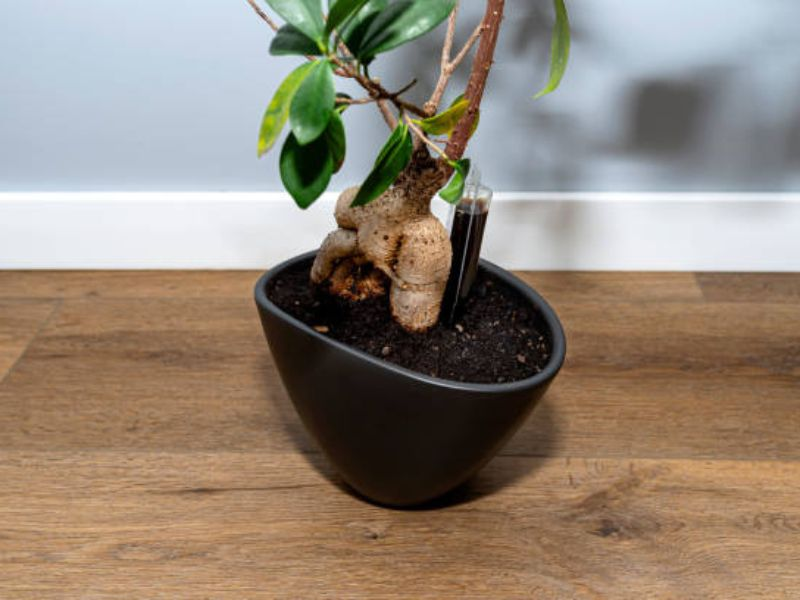
At the heart of bonsai cultivation is the understanding that these trees are living in relatively confined spaces with limited soil volume. Over time, as the bonsai absorbs nutrients, the soil can become depleted, lacking essential elements that the tree requires to flourish.
This is especially true for certain bonsai styles which might involve more rigorous pruning or shaping, exerting additional stress on the tree and thereby increasing its nutrient consumption.
Fertilizers act as supplements, replenishing the soil’s nutrient content and ensuring a consistent supply for the bonsai. They provide vital macronutrients like nitrogen, phosphorus, and potassium, as well as a range of micronutrients essential for various metabolic processes within the tree.
Without these additional nutrients, a bonsai might exhibit signs of malnourishment such as yellowing leaves, stunted growth, or reduced resistance to diseases and pests.
Types Of Fertilizers Suitable For Bonsai
When it comes to bonsai, there are primarily two broad categories of fertilizers to consider: organic and inorganic. Each has its merits, and the choice between them often intertwines with the specific needs of different bonsai styles.
Organic Fertilizers
Derived from natural sources, organic fertilizers encompass materials like compost, bone meal, fish emulsion, and seaweed extracts. They release nutrients slowly over time, ensuring a steady supply of nourishment for the bonsai. This gradual release can be particularly beneficial for bonsai styles like the informal upright style or forest style, which require consistent growth over extended periods.
Organic options also enhance the soil’s microbial life, promoting a healthy soil ecosystem that can boost the tree’s resilience against diseases.
Inorganic Fertilizers
Understanding bonsai styles and soil preferences is crucial when considering fertilization. These are synthetically produced and typically come in pellet or liquid form. Inorganic fertilizers offer a quick release of nutrients, which can be advantageous for bonsai styles that demand bursts of growth or are recovering from stress, such as repotting. For instance, both the cascade and semi cascade bonsai styles, known for their dramatic downward growth and specific soil preferences, might benefit from timely nutrient boosts to aid in their unique growth patterns.
However, care must be taken to avoid over-fertilization, which can lead to nutrient burns or imbalances.
Choosing Based On Bonsai Style
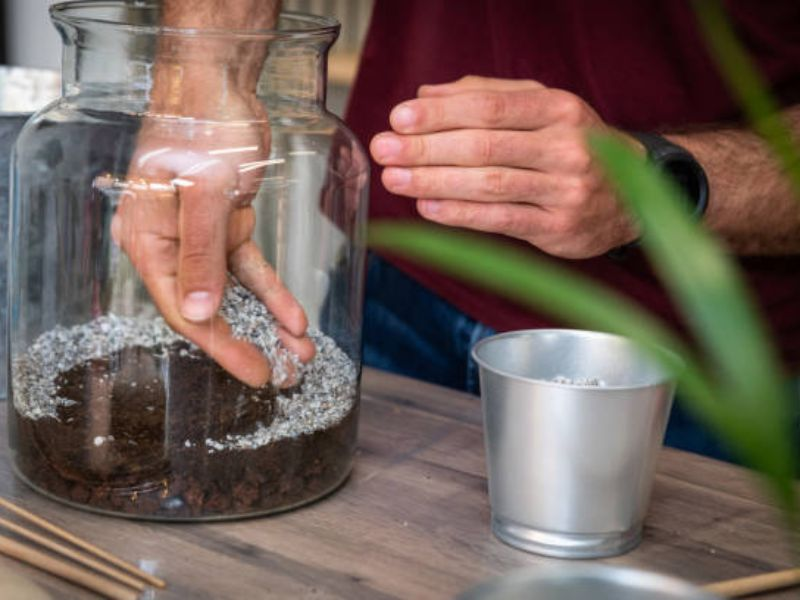
Diverse styles possess individual characteristics, which subsequently influence their soil and nutrient requirements. Here’s an exploration of some primary bonsai styles and their corresponding requisites:
- Formal Upright Bonsai Style (Chokkan): This style symbolizes trees evolving undisturbed in nature. Soils abundant in organic materials, complemented with compost or matured manure, can emulate the nutrient conditions of a tranquil forest environment. Such soils encourage uniform, balanced growth.
- Multi Trunk Style (Ikadabuki): Representing several trees growing collectively, this style may have varied nutritional needs. Given that multiple trunks share a single root system, a nutritionally rich blend of both organic and inorganic components can guarantee that all sections receive ample nourishment.
- Broom Style Bonsai (Hokidachi): Characterized by its balanced branches, this style often thrives with a mix of both organic and inorganic constituents. Organic elements, like leaf mold, offer steady nourishment, while inorganic components can provide swift nutrient boosts during periods of accelerated growth.
- Deciduous Trees Vs. Other Types: Deciduous bonsai trees shed their foliage annually, indicating specific growth and dormancy phases. Throughout their active growth in spring and summer, they could benefit from organic-rich soils enhanced with added nitrogen to support new foliage and branch formation. Conversely, other bonsai types might maintain more uniform nutritional needs all year round.
Why Is It Important to Understand Different Bonsai Styles?
Gaining an understanding of the different bonsai tree styles, including the various techniques and aesthetic principles of different bonsai styles, empowers you to make informed decisions when selecting the perfect tree, as well as when shaping, pruning, and training it. This knowledge will undoubtedly contribute to your tree’s aesthetic appeal and overall beauty.
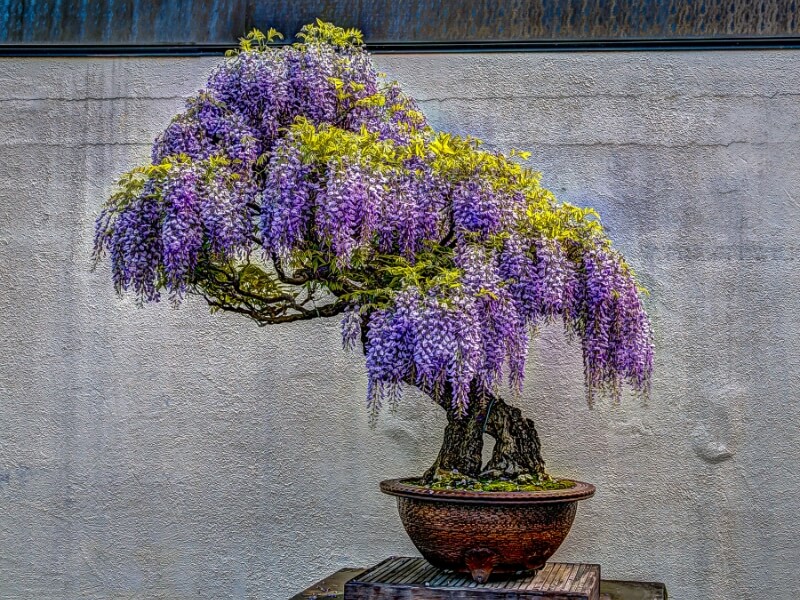
1. Displaying the Best Features
The beauty of a Bonsai tree stems from its natural shape and display of its best features. By understanding the style of your Bonsai tree and what characteristic features are typical of that style, you can further enhance the visual aesthetics of your tree. A well-maintained Bonsai tree reflects its character, and it’s a statement of your hard work and creativity.

2. Training and Shaping
Without understanding the style of your Bonsai tree, shaping it to perfection may seem challenging. Different styles dictate different techniques for pruning and shaping to achieve the desired end result. The best way to train a Bonsai is to understand its natural growth habits and apply these habits to achieve the desired shape while keeping the plant healthy. Without prior knowledge of Bonsai styles, you may be left with a poorly shaped Bonsai that will not grow healthily.
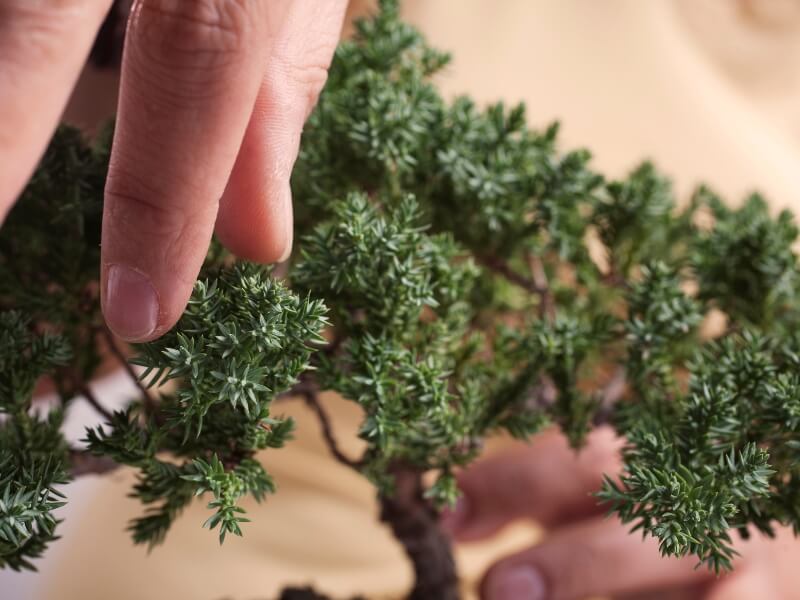
3. Selecting the Right Bonsai Tree
Different bonsai tree styles are suitable for different plants, and vice versa. Understanding the various styles of Bonsai trees will help you select the right plant that complements the space you have. The size of a Bonsai tree also plays a fundamental role in selecting and shaping it to fit the space provided. Each style has its unique requirements, which are important to consider if you want to grow a healthy and beautiful Bonsai tree.

4. Artistic Expression
The art of Bonsai is rooted in expressing your creativity through the natural beauty of a tree. Understanding the different styles of Bonsai can add to the beauty and artistic appeal of your tree by allowing you to create a truly unique and aesthetically appealing Bonsai tree. Styling a Bonsai tree correctly can be an enjoyable and therapeutic experience, so it’s important to do it right.
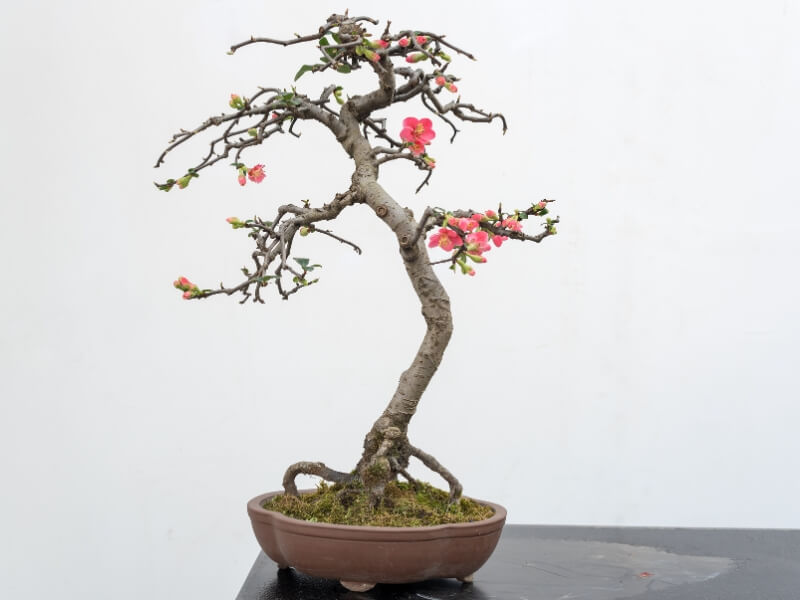
Linking Bonsai Styles With Fertilizing Needs
Bonsai, a practice rooted in patience and precision, boasts a myriad of styles, each encapsulating a unique narrative of nature’s dance. However, beneath the aesthetic choices and forms lie varying nutritional needs tied closely to each style. It’s essential to understand these demands to provide the best care and nutrition for each bonsai tree.
Formal Upright Style (Chokkan)
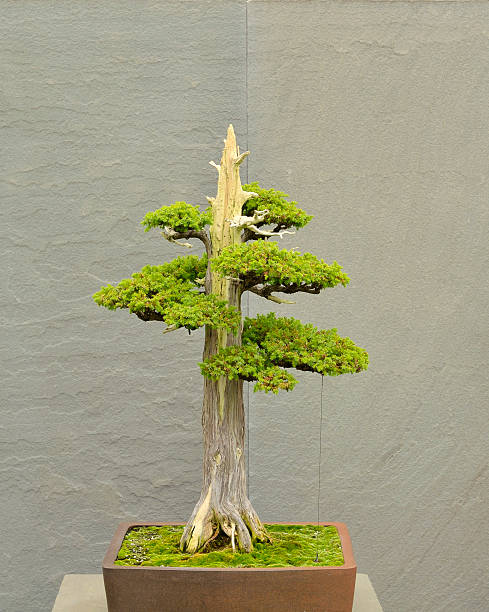
Representing the image of a tree unaffected by external factors, the formal upright style portrays stability and strength. Such trees grow vertically, with symmetrical branches. Their structured growth implies a consistent nutritional need.
Balanced fertilizers with a 14-14-14 N-P-K ratio (indicating 14% Nitrogen, 14% Phosphorus, and 14% Potassium) are recommended for them, ensuring even growth throughout the tree.
Multi Trunk Style (Ikadabuki)
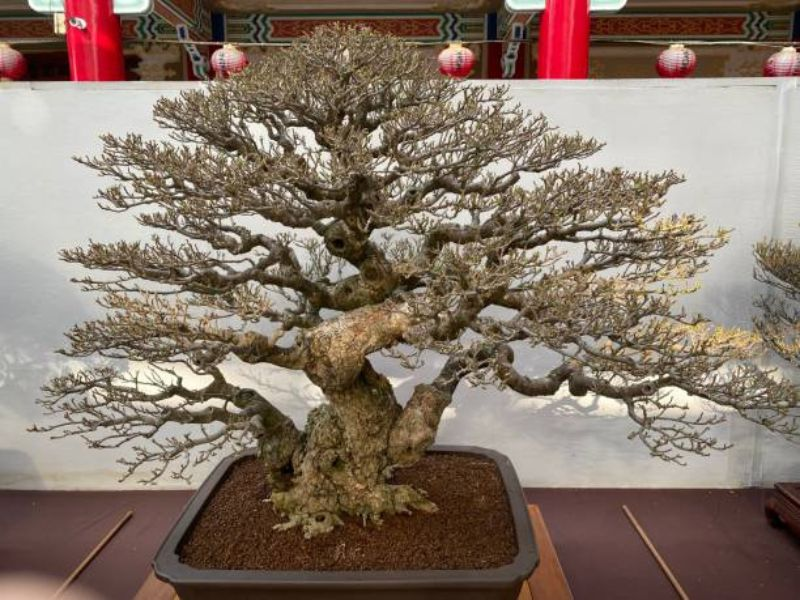
A representation of multiple trees growing together, the multi trunk style creates an image of a small forest or grove. Since this style comprises several trunks from a single root system, it can demand higher nutritional needs than single trunk bonsai.
A slightly nitrogen-rich fertilizer with an 18-12-12 N-P-K ratio ensures every trunk and its branches receive ample nourishment.
Broom Style Bonsai (Hokidachi)
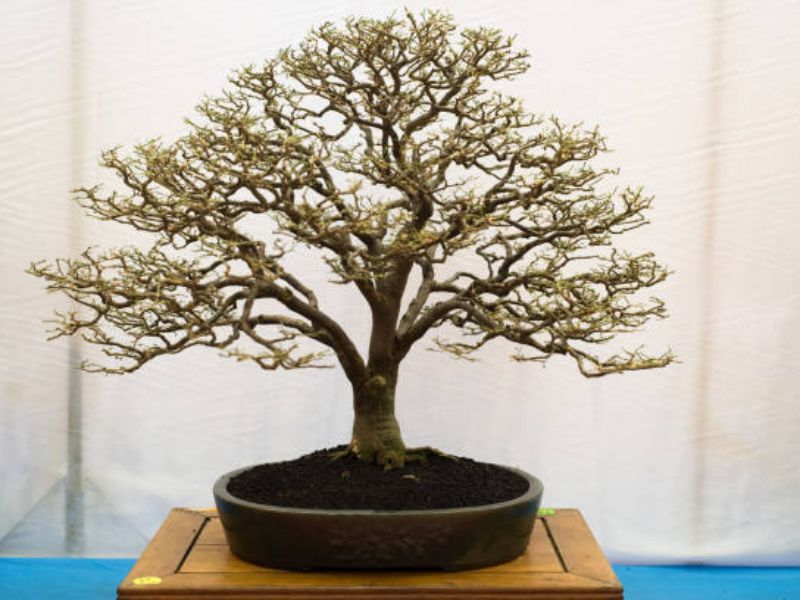
Mimicking the shape of a broom, this style is characterized by straight trunks and symmetrical branches. Commonly chosen for deciduous trees, they have a uniform growth pattern.
These trees benefit from a nitrogen-focused fertilizer with a 20-10-10 N-P-K ratio during their active growth seasons in spring and early summer.
Deciduous Trees Vs. Other Types
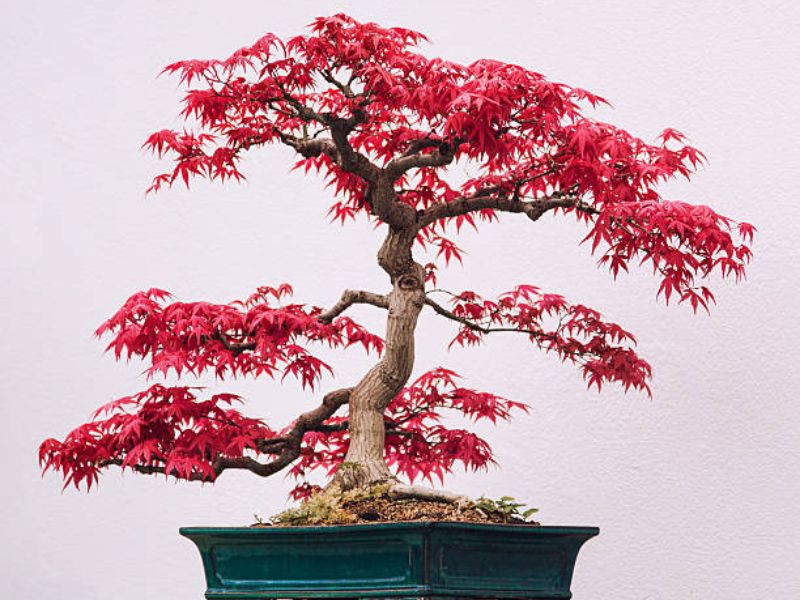
Deciduous trees, a category within bonsai styles and soil preferences, shedding their leaves annually, have specific growth and dormancy cycles. Their active growth phase in the spring and summer requires a richer supply of nutrients, especially nitrogen, to support new foliage and branch development.
A 21-7-7 N-P-K fertilizer works well for this phase. In contrast, evergreen and coniferous bonsai maintain their foliage year-round, benefiting from a balanced fertilizer with a 14-14-14 N-P-K ratio to sustain steady growth.
Further nuances come into play when considering other bonsai styles and tree types. For instance, the semi cascade bonsai style might need a fertilizer with a higher phosphorus content, such as a 10-20-10 N-P-K ratio, to support its root system due to the strain of its downward growth.
Similarly, the windswept bonsai style, which portrays a tree battling strong winds, might benefit from a comprehensive mix with enhanced micronutrients to boost resilience.
10 Popular Bonsai Tree Styles
#1 – Formal Upright Style (Chokkan)
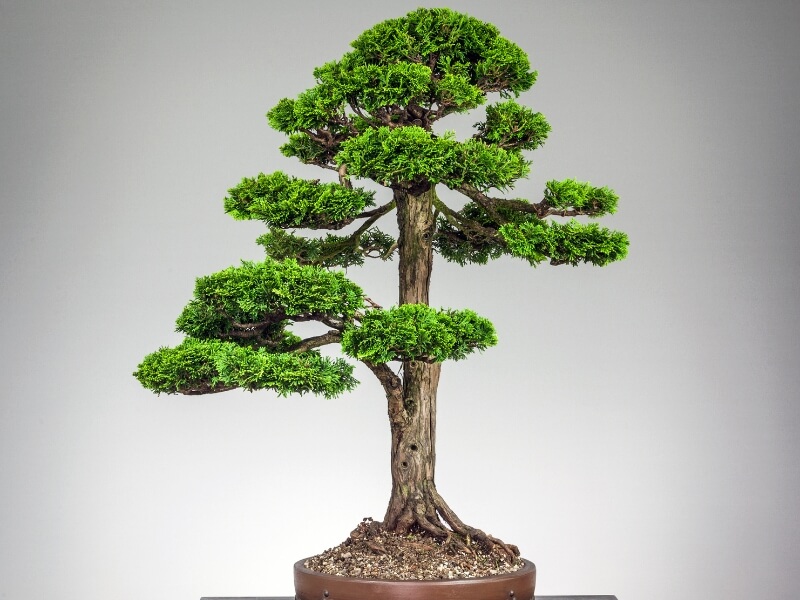
The Formal Upright style is one of the most popular bonsai styles and one of the easiest ones for beginners. In this style, the trunk grows straight upward with gradually tapering branches, becoming narrower towards the top.
With its straightforward yet refined aesthetics, the Formal Upright style offers a perfect starting point for those venturing into the art of bonsai.
Techniques for Mastering this Bonsai Style
To master the Formal Upright bonsai style, the trunk should have a clear and visible taper. The key is to make the trunk thicker at the base and gradually thinner as it ascends. At around ¼ of the total trunk length, you should begin branching.
In achieving this style, the top of the bonsai tree must be formed by a single branch. Make sure that the trunk will not span the entire height of your bonsai tree.
Recommended Tree Species
Trees with strong, thick trunks are the best trees for this bonsai style because of their natural tapered shape. Here are some suitable tree types for the formal upright style:
#2 – Informal Upright Style (Moyogi)
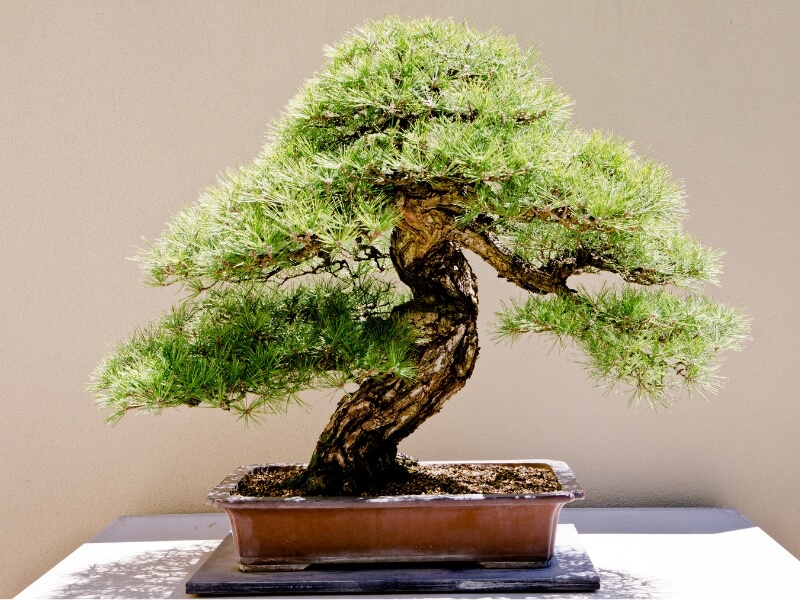
Like the Formal Upright Style, this style also represents one of the different bonsai styles. However, instead of growing straight upward, its trunk grows outward, creating an “S” shape which gives an illusion of being in motion with nature.
Additionally, the gentle curves and subtle bends in its trunk create a relaxed and organic appearance, capturing the organic beauty of the tree’s growth.
Techniques for Mastering this Bonsai Style
To achieve the Informal Upright style, embrace the art of shaping with subtle bends and curves, and employ wiring techniques to guide the trunk into its flowing and dynamic form. An alternative approach involves repotting the tree and tilting it before covering the bottom part with soil, allowing the tree to grow at a gentle angle.
Recommended Tree Species
The Informal Upright style can be applied to a wide range of tree species, including any coniferous tree. Here are some of the species that are particularly well-suited for this style:
- Japanese Maple
- White Pine
- Crab Apple
- Trident Maple
- Juniper
- Beech
- Pomegranate
#3 – Slanting Style (Shakan)
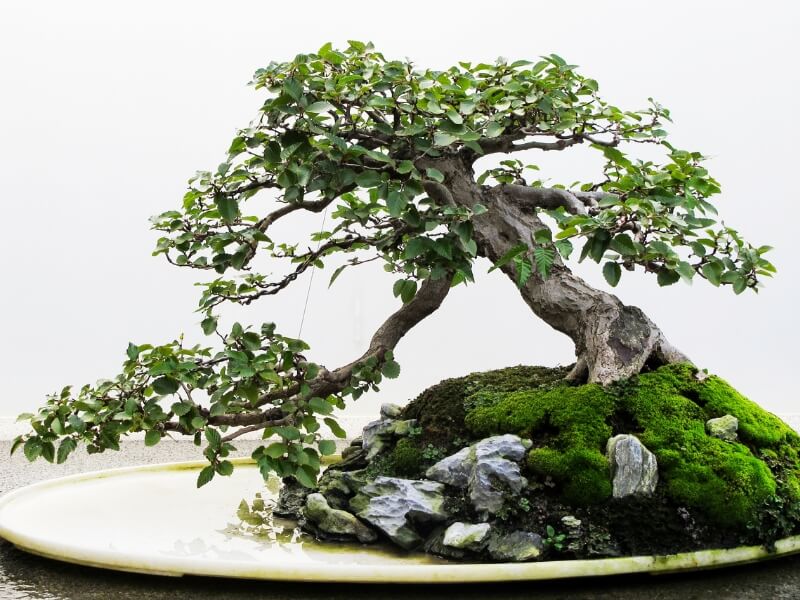
The Slanting style is a captivating bonsai design that evokes a sense of motion and resilience. Looking at its design, it imitates a tree that has stood firm against the forces of strong winds.
In this style, the trunk grows at a noticeable slant, bending dramatically in one direction.
Techniques for Mastering this Bonsai Style
To achieve the captivating Slanting bonsai style, aim for a distinctive angle of about 60 to 80 degrees relative to the ground. The key characteristic is the visible lean, giving the impression of a tree gracefully bracing against strong winds.
Ensure that the roots are well-developed on the side where the tree leans, providing stability and support. On the opposite side, the roots should be visibly less developed.
To maintain visual balance, make sure that the first branch grows in the direction opposite to that of the tree’s slant.
While the trunk can display slight curves or remain relatively straight, it should exhibit a gradual taper from the bottom to the top.
Recommended Tree Species
The Slanting style is suitable for many tree species, including conifers. Here are other suitable tree types for this style:
- Juniper
- Japanese White Pine
- Japanese Cedar
- Crab Apple
- Beech
- Trident Maple
#4 – Cascade Style (Kengai)
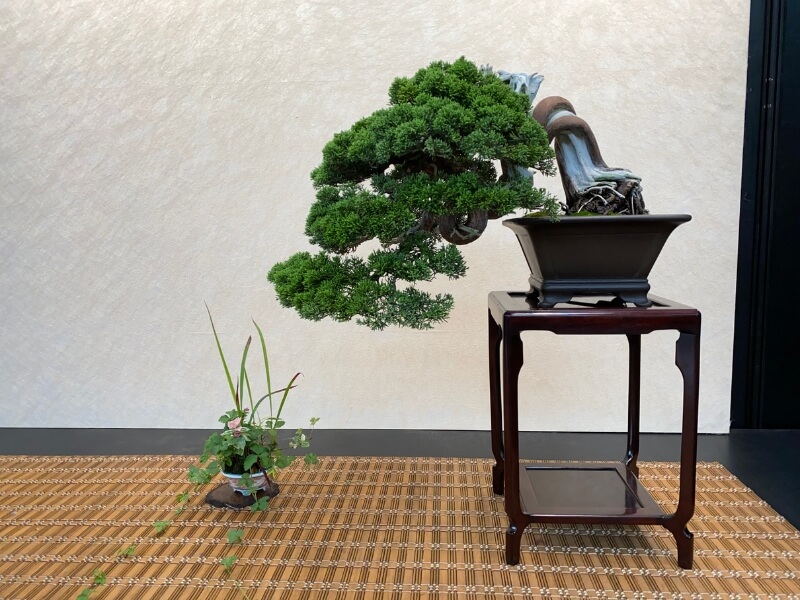
The Cascade style takes us on a journey down a steep cliff. In this unique style, the trunk starts growing upward but then suddenly bends down, with the top of the tree reaching below the edge of the bonsai container. This creates a graceful cascading effect, resembling a tree descending a rugged slope.
The beauty of the Cascade style lies not only in the dramatic downward bend of the trunk but also in the artful arrangement of branches and foliage.
As the trunk descends, branches reach out in a harmonious balance, creating a sense of unity and harmony between the cascading elements.
Techniques for Mastering this Bonsai Style
Creating a Cascade-style bonsai can be challenging, as it involves training the tree to grow in a downward direction, contrary to its natural inclination to grow upright.
To achieve this bonsai style, use a tall pot to accommodate the downward growth. Allow the trunk to grow upright and then gently bend it downward.
The top of the tree should be above the pot’s rim, and subsequent branches should alternate left and right along the S-shaped trunk. To maintain balance, let the branches grow horizontally.
Recommended Tree Species
Cascade bonsai styles are best suited for low-growing tree species because their natural growth already complements the cascading effect. However, with proper techniques, almost any tree species can be adapted to the cascade style.
Here are other suitable tree types for this style:
- Chinese Juniper
- Japanese White Pine
- Mountain Pine
- Scotch Pine
#5 – Semi-Cascade Style (Han-Kengai)
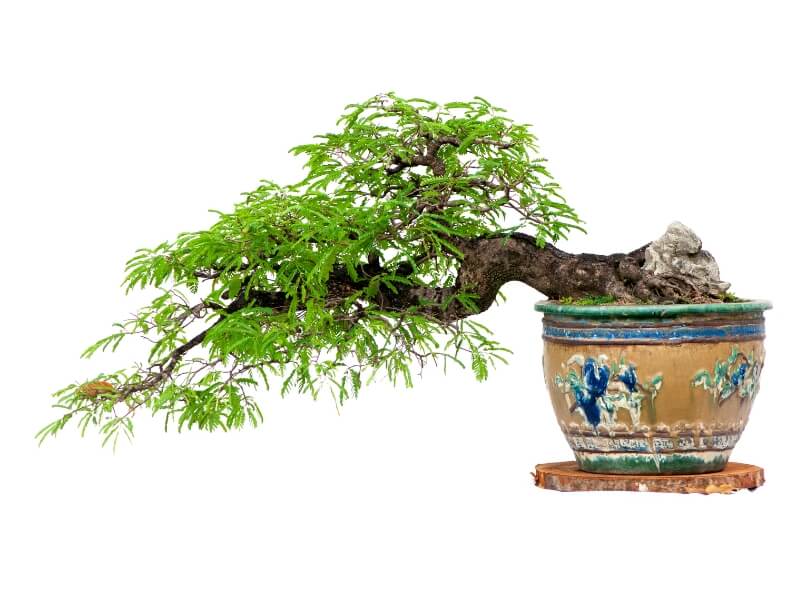
Similar to the Cascade style, the Han-Kengai, or semi-cascade style, also showcases one of the different bonsai styles that imitate a tree living on a steep cliff.
In this style, the trunk starts growing upward for a short distance, then gently curves downwards, often at a slight angle. Unlike the cascade style, the trunk will not extend below the bottom of the bonsai container, and the top of the tree usually reaches the rim of the container.
Techniques for Mastering this Bonsai Style
Just like the cascade style, mastering the semi-cascade bonsai style also requires a delicate balance of artistry and technique.
Just a tip when creating this style, make sure that the crown is above the rim of the pot, and let the subsequent branching occur below the rim of the pot.
Recommended Tree Species
Tree types that are well-suited for the cascade style are also ideal for the semi-cascade style. Here are some suitable tree types for this style:
- Chinese Juniper
- Japanese White Pine
- Mountain Pine
- Scotch Pine
- Willows
- Chrysanthemums
- Wisteria
- Star Jasmine
#6 – Group Planting Style or Forest Style (Yose-ue)

Unlike other bonsai styles that focus on a single tree, the forest style involves the arrangement of several trees within the same bonsai composition. These trees collectively create the illusion of a small forest landscape in miniature form.
The forest bonsai is typically planted in a large and shallow pot. This allows for the effective placement of multiple trees and provides ample space for the complex root systems of the forest composition.
Techniques for Mastering this Bonsai Style
To achieve the Forest Bonsai Style, select tree species with varying shapes, sizes, and trunk thickness. In a large and shallow pot, arrange trees with taller ones in the center and smaller ones around them.
TIP: For a more natural look, avoid positioning them neatly in rows.
Recommended Tree Species
The forest bonsai style typically consists of trees of one species. Some suitable tree types for this style include:
- Japanese Beech
- Japanese Maple
#7 – Windswept Style (Fukinagashi)

The Windswept style in bonsai art beautifully portrays trees that endure challenging conditions in order to survive.
In this style, both the branches and trunk grow towards one side as if nature’s winds have shaped the tree’s growth over time. While the branches initially grow in all directions around the trunk, they eventually bend to one side.
Even though it shares some similarities with other bonsai styles, the windswept is considered a non-traditional bonsai style.
Techniques for Mastering this Bonsai Style
To achieve this style, make sure to choose the right tree. You can choose those tree species that develop the contorted and drooping qualities of the windswept style.
TIP: Opt for a young tree, as it’s easier to shape than older ones.
And, of course, pruning and wiring are crucial techniques for shaping a windswept bonsai, but remember to be gentle and make gradual adjustments over time.
More importantly, consider the environment. A windswept bonsai needs to be grown in an environment that mimics the harsh conditions of its natural habitat.
Recommended Tree Species
Here are some suitable tree types for the windswept style are:
- Chinese Juniper
- Japanese White Pine
- Mountain Pine
- Scotch Pine
- Red Pine
- Japanese Plum Tree
#8 – Multi-Trunk or Raft Style (Ikadabuki)
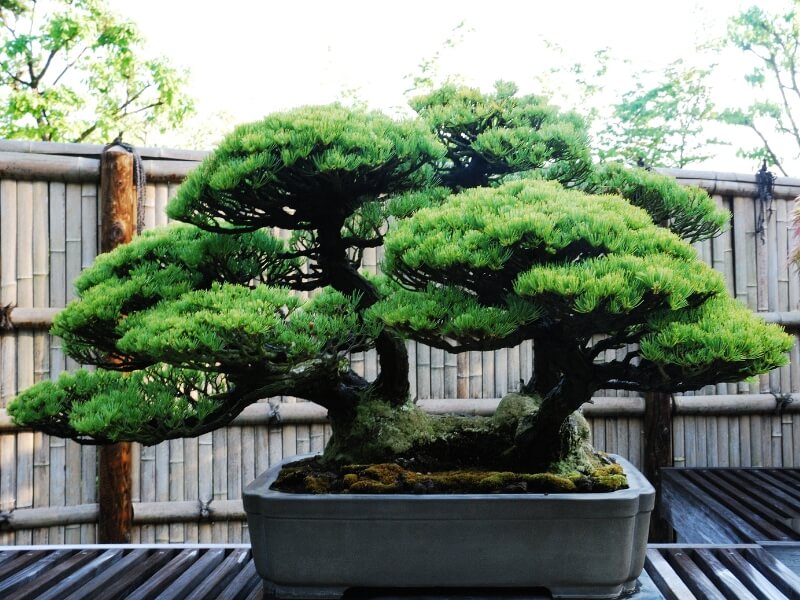
The multi-trunk or raft bonsai style shares similarities with the forest style, but the distinction lies in their composition: while the forest style comprises multiple trees, the multi-trunk style consists of a single tree with many branches.
This uniquely beautiful bonsai style mimics a tree in nature that has been damaged by a storm or wind. As time passes, new roots emerge from the fallen trunk, and the branches gradually grow vertically, giving rise to a new tree that remains connected to the original fallen trunk.
Techniques for Mastering this Bonsai Style
Achieving this bonsai style involves laying a tree on its side and encouraging it to root along with the recumbent trunk.
Make sure to remove the branches from the underside of the old trunk so that it can lie comfortably in its new posture. Leave the other branches intact and let them develop into trees.
Recommended Tree Species
Some suitable tree types for the raft bonsai style include Japanese White Pine.
#9 – Literati Style (Bunjin-gi)
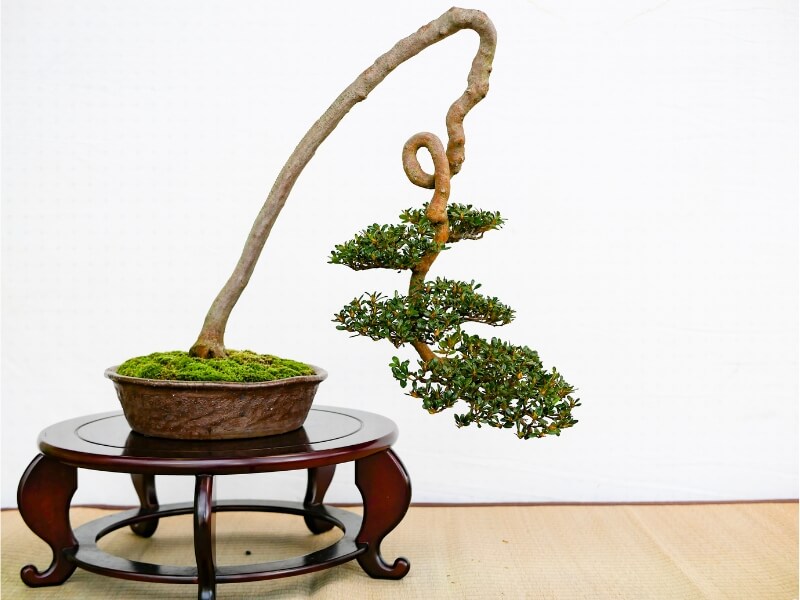
The Literati bonsai style is considered one of the most challenging bonsai styles. Similar to the windswept style, the Literati style depicts a tree growing in dense and crowded areas where they compete for resources.
This style is characterized by its thin trunk and sparse branches. While some may find it quirky and unusual, achieving this design is considered quite challenging. It demands years of bonsai experience and deep tree knowledge to successfully create a literati bonsai tree.
Techniques for Mastering this Bonsai Style
To enhance its rugged appearance, consider “Jinning” some branches by removing their bark, and on one side of the trunk, create a “Shari” by exposing the bare wood. By doing these techniques, it symbolizes the tree’s struggle to survive and adapt to challenging conditions.
Recommended Tree Species
Here are some suitable tree types for the literati style are:
- Red Pine
- White Pine
- Japanese Plum Tree
#10 – Broom Style (Hokidachi)

Reading its name, the broom bonsai style exhibits a formal and upright posture, resembling a broom’s handle, with a straight trunk devoid of significant bends.
Looking at the overall shape of the broom-style bonsai, it mimics an inverted broom, where the bristles of the broom become the canopy of the tree.
In general, the broom style is one of several bonsai styles characterized by relatively upright trunks. While the formal upright style also exhibits an erect posture, the broom style sets itself apart through the specific formation of its dense and rounded crown, creating a striking visual effect.
Techniques for Mastering this Bonsai Style
It may look simple and tidy, but sustaining this bonsai style can be quite challenging due to its meticulous nature. Unlike other style bonsai in which branching and the apex are designed by simply modifying existing material, branching and the apex on the broom style bonsai have to be developed in a totally different fashion. This takes time; there is no such thing as an “instant” broom style bonsai
Recommended Tree Species
This bonsai tree is best suited for deciduous trees due to their fine branching. Several tree types are suitable for this style, including:
- Chinese Elm
- Japanese Maple
- Japanese Zelkova
- Brush Cherry
- Pomegranate
- Siberian Elm
- English Elm
- Crab Apple
- Beech Olive
Practical Fertilizing Strategies
While understanding the nutritional needs specific to various bonsai styles is foundational, implementing practical and effective fertilizing strategies is equally crucial. These strategies encompass timing, quantity, and application techniques, ensuring the bonsai receives optimal nutrition without overwhelming its system.
Timing: When to Fertilize Your Bonsai Tree
The timing of fertilization plays a significant role in determining the health and vigor of your bonsai tree. Different styles, with their inherent characteristics, might have varying peak periods for growth and thus, distinct ideal times for fertilization:
- Deciduous Trees (such as Broom Style Bonsai – Hokidachi): These trees, particularly when cultivated in styles like the broom style, experience a burst of growth as they emerge from dormancy in early spring. The optimal fertilizing window starts in spring and continues through early summer, reducing the frequency as fall nears.
- Multi Trunk Style (Ikadabuki): Trees sculpted in the multi trunk style can often represent a dense grove or forest scene, with multiple trunks branching out from a singular root system. Given the cumulative nutritional needs of the many trunks, it’s advisable to maintain a steady fertilizing regimen starting from mid-spring through late summer to ensure each trunk receives adequate nourishment.
- Formal Upright Style (Chokkan): Epitomizing a tree growing in perfect conditions, the formal upright style showcases a bonsai with a straight, unswayed trunk and symmetrically arranged branches. Given its structured growth pattern, trees of this style benefit from a consistent fertilization routine. Starting in early spring as new buds appear and continuing through to late summer ensures a balanced growth.
- Evergreens & Conifers: Though they exhibit a relatively even growth throughout the year, their prime growth spurt occurs in late spring to early summer. Fertilization during this phase ensures they gain the maximum benefit from the nutrients.
Quantity: Understanding How Much To Feed

Striking a balance is key. Over-fertilizing can lead to nutrient burns or imbalances, while under-fertilizing can result in stunted growth or deficiencies.
- For organic fertilizers, since they release nutrients slowly, regular applications at the recommended doses are generally safe.
- Inorganic fertilizers, given their fast-release nature, should be used more cautiously with consideration of bonsai styles and soil preferences. It’s often advisable to use them at half the recommended strength, especially for bonsai trees in smaller bonsai containers.
Techniques: Surface Application And Bonsai Container Considerations
Surface Application: This is the most common technique, where granular or pellet fertilizers are evenly spread on the soil surface. Over time, as you water the bonsai, the nutrients seep into the soil, reaching the roots.
- Liquid Fertilizers: These are diluted in water and administered during the watering process. They offer a more immediate nutrient boost, beneficial for basic styles like the semi cascade style that might need more immediate nourishment.
- Bonsai Container Considerations: The container’s size and depth play a role in fertilization. Trees in a large and shallow pot might need more frequent fertilizing compared to those in deeper pots, due to the limited soil volume.
- Fertilizer Balls: Some bonsai enthusiasts prepare fertilizer balls from organic materials, placing them on the soil surface. As they degrade, they release nutrients steadily.
Importance Of Monitoring Soil Health
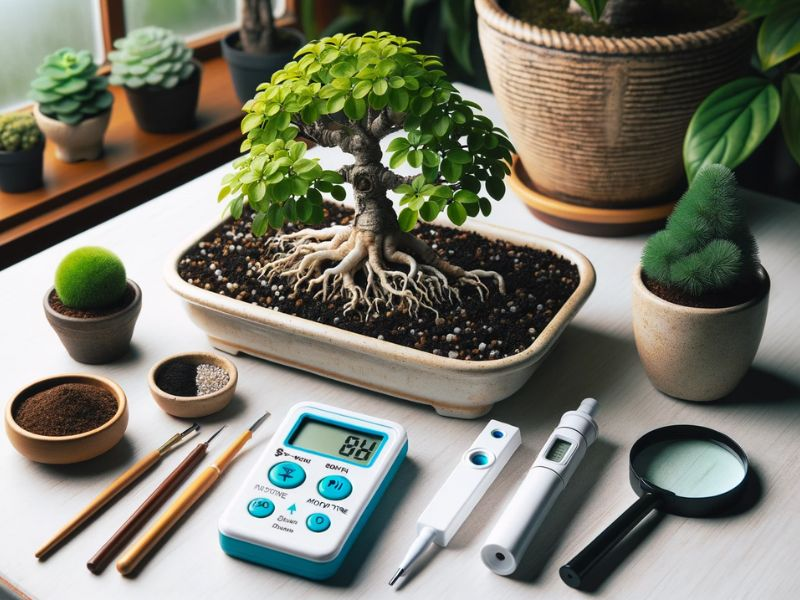
While the external beauty of a bonsai tree is evident, the true vitality of the tree emanates from its roots and the soil in which they reside. Monitoring soil health is crucial for ensuring the longevity and vibrancy of your bonsai.
Signs Of A Well-Nourished Bonsai
A well-nourished bonsai is an embodiment of harmony and growth.
Some indicators include:
- Lush Foliage: A consistent green hue and a lack of yellowing or browning tips suggest that the tree is receiving the nutrition it needs.
- Sturdy Growth: New growths appear robust, and branches are resilient.
- Healthy Roots: Upon inspection, roots should appear white or light tan, signifying health and vigor.
- Uniform Leaf Size: The leaves across the tree should be of uniform size, denoting consistent nutrition absorption.
Signs Of Nutritional Deficiencies
Contrastingly, if a bonsai lacks proper nutrition, it will display symptoms.
These include:
- Yellowing Leaves: This can signify a nitrogen deficiency, especially if older leaves are the ones yellowing.
- Leaf Tip Burn: Could indicate high salt concentration in the soil or potassium deficiency.
- Stunted Growth: A clear sign of either nutrient deficiency or issues with the tree’s root system.
- Weak or Thinning Foliage: Sparse leaves or dropping of leaves can point towards insufficient nutrition or potential pests.
Adjusting Care Based On The Tree’s Natural Design And Growth
It’s paramount to remember that each bonsai, influenced by its tree’s natural design, has individual needs. A cascade bonsai, with its downward draping branches, might require different care than an informal upright style, characterized by its slightly s-shaped trunk.
For instance, trees that are more vertical, like the formal upright style, may require a consistent watering pattern, whereas styles mimicking trees growing under stressed conditions, like the windswept style, might need less frequent watering.
Furthermore, the bonsai container’s choice can impact soil health. A large and shallow pot might mean the soil dries faster, necessitating a more vigilant watering schedule. On the other hand, deeper pots can retain moisture longer, making it crucial to ensure proper drainage and avoid root rot.
Adapting And Learning In Bonsai Cultivation
Bonsai is as much a journey as it is an art form. As both the tree and caretaker grow, they embark on an ever-evolving dance of adaptation and mutual understanding. This harmonious relationship accentuates the continuous need for learning in the world of bonsai.
The Lifelong Journey Of Bonsai Cultivation
From the initial planting in a bonsai container to selecting basic bonsai styles, every choice crafts the tree’s unique story. As seasons change, the bonsai’s needs shift, and with each challenge, the caretaker learns and adapts, understanding the intricacies of styles like the formal upright bonsai or the multi trunk style.
The Value Of Continued Learning
The diverse nature of bonsai styles and soil preferences ensures a never-ending learning curve. While mastering one style, there’s always another waiting to be explored. Adapting to seasonal changes, understanding different fertilizer needs, or simply sharing experiences with fellow enthusiasts adds to the richness of the bonsai journey.
Bonsai cultivation isn’t just about shaping trees; it’s about shaping oneself, continually adapting, and embracing the joy of lifelong learning. As you nurture your own bonsai, let it be a reflection of your growth and dedication to the art.





0 Comments